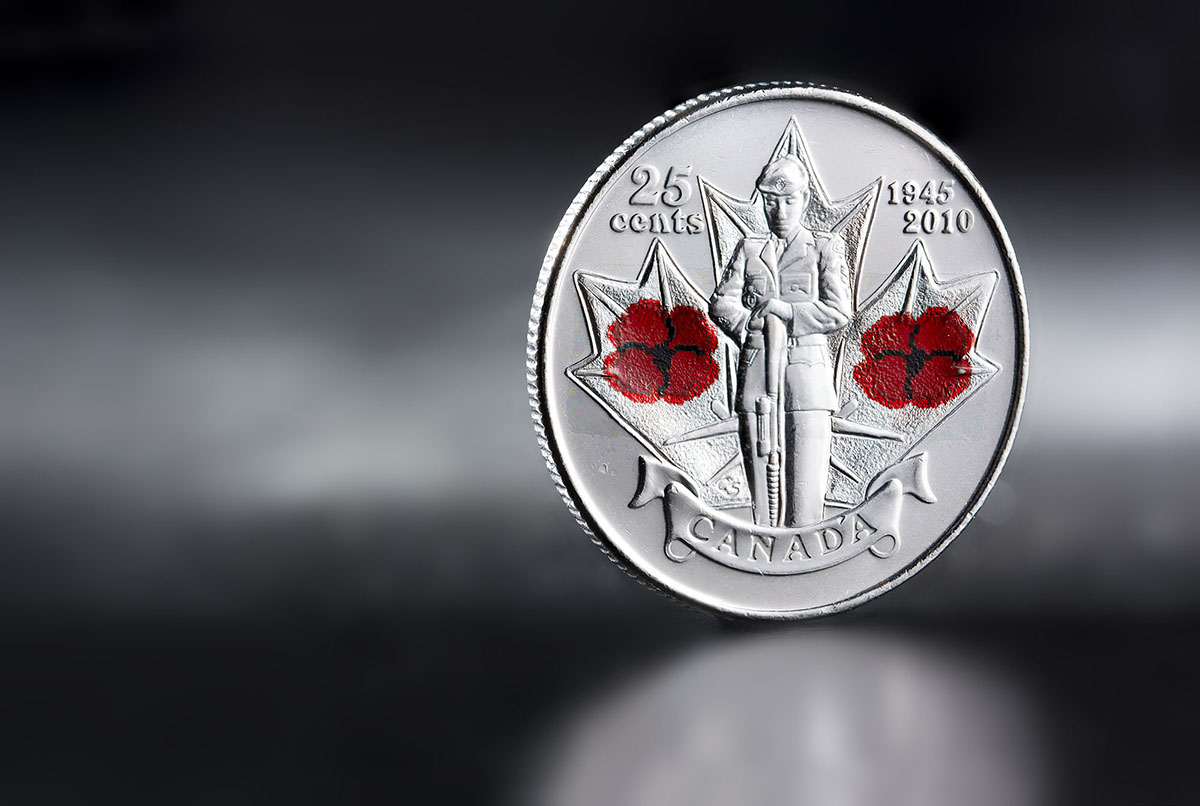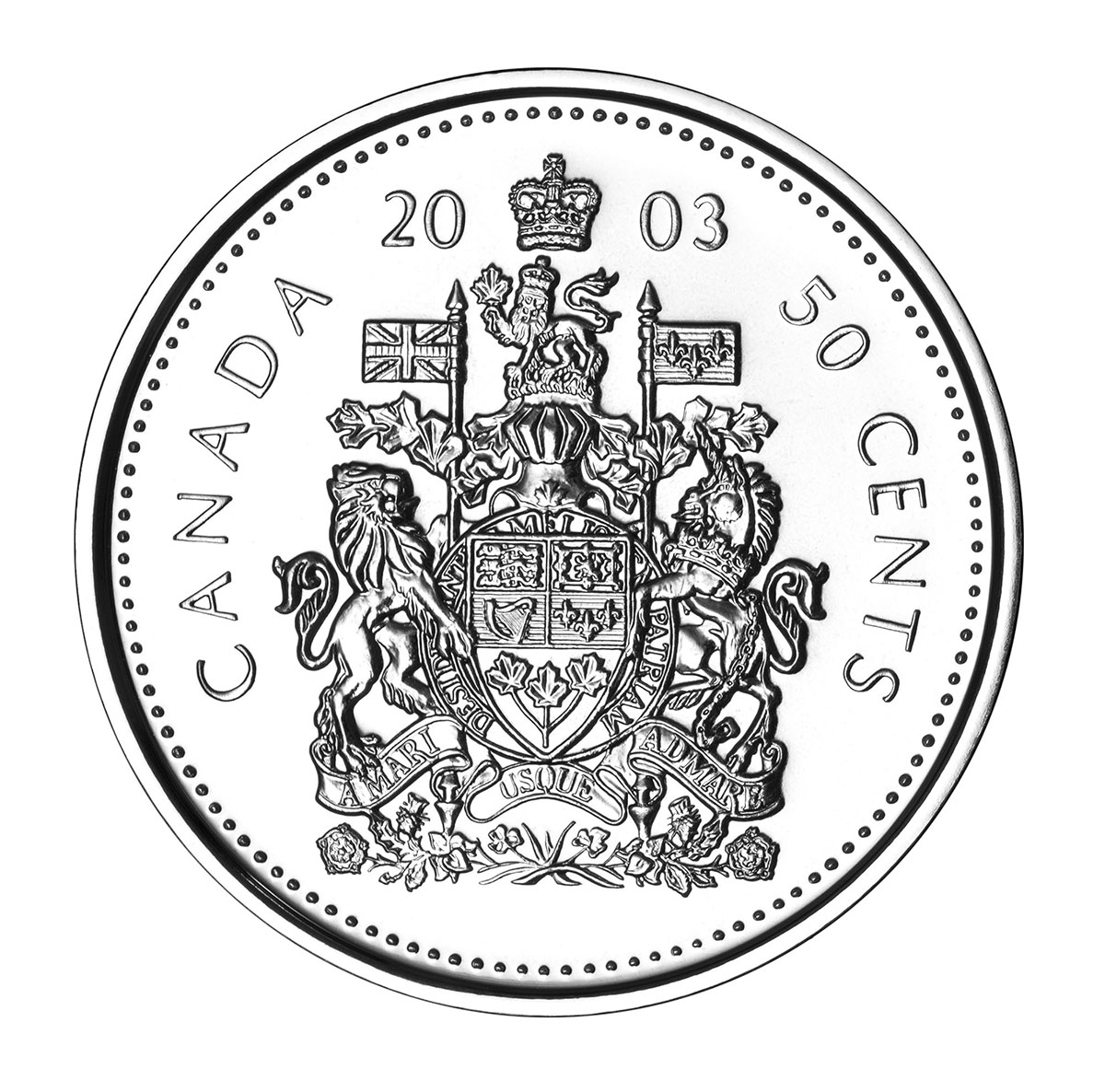How to Take Standout Photos of Coins
Most photographers have at least some appreciation for the beautiful images of coins that their national mint creates, but few photographers know how to take those images themselves. Despite the many challenges involved in coin photography, once you know the right technique it becomes as simple as any other photography genre. The key is camera placement, and lighting. Knowing those two elements will allow you to take shots that wouldn’t look out of place in a mint’s brochure.

With coin photography, the reflections in the coin are what make the shot. You need to ensure that you have a nice, large surface for the coin’s face to pick up, and have that surface placed at the right angle so that the camera sees the reflection. However, if you just shot the coin head on, like you see in brochures, you’ll get the reflection of the camera instead. In order to capture the reflections you want, you’ll need to employ some tricks.
There are three main ways to avoid having the camera in the reflection.
1. Tilt the coin
If you tilt the coin so that it’s not facing the camera, you no longer risk having its reflection on the coin. Now you have the freedom to place your camera and reflectors wherever you want (as long as all the angles work out, as per the law of reflections), and you can easily get the look you want without sacrificing any quality. However, you’re no longer capturing the coin head on. While this is great for more creative or artistic compositions, you’ll still want to be able to get those brochure style images, and tilting the coin won’t let you do that.

2. Shoot through glass
If you really want to get fancy, you can angle a piece of glass between the coin and the camera, and have the glass reflect a large light source that’s out of frame. If you line the angles up just right, the glass will act as a reflector for the coin, blocking the camera and providing a nice white light, but the camera will be able to shoot through the glass unobstructed and capture the coin. This can be tricky to get right, you’ll want a good, clean sheet of glass, and it’s generally a very technical and frustrating endeavour that I’d avoid trying until you have a decent amount of experience with coin photography and really want to take it to the next level.

3. Frame the coin in the corner and crop
The easiest way to photograph a coin head on is to back the camera up a bit and position the coin in the corner of the frame. If you’re far enough back, the coin won’t pick up the camera in it’s reflection, and you’ll be able to put a reflector right above it to get the highlight you want. Of course, you then have to crop the frame significantly for your final image, and in doing so you’ll lose a lot of resolution. Generally, I find that a photo taken using this technique on a 24 megapixel camera results in a 1-2 megapixel final image. It’s plenty usable for a brochure, but you won’t be printing posters. If you have a 36MP or 50MP camera you’ll see much better results, but if you have a 12MP camera this method may be disappointing.
Lens Recommendations
For methods #1 and #2, a macro lens is ideal. You’ll want at least 1:3 magnification, preferably 1:1. This will let you fill the frame with the coin and capture as much detail as possible. Longer lenses also help, as it gives you more room to set up the lighting and equipment. Generally a 100mm or 105mm lens is a perfect choice for coins. For method #3 a macro lens is less necessary, since you’re cropping in rather than getting close. So your best bet is to have a lens that’s very sharp in the corners, usually at f8-f11. Macro lenses are still a great choice, since they usually have good edge to edge sharpness, but they’re not a necessity.

Tripod Recommendations
A good tripod is important to this kind of work. For method #1, there’s a good chance that you’ll need to focus stack in order to get the whole coin in focus. For this, you just need a stable tripod that will let you either adjust focus or use a focus rail without changing the composition. For method #2, the tripod’s necessary for holding the camera in place as you adjust the angle of the glass plate. The slightest movement can completely ruin the alignment of the reflections when you’re working with such a precise technique. For method #3, if you have a lateral arm for your tripod you’ll have an easier time. Without it, it can be hard to position the legs without getting in the coin or camera’s way. With a lateral arm, you can extend the head of the tripod away from the legs and completely avoid that positioning issue. Just make sure you weigh down the tripod so it doesn’t topple. However, a normal tripod will still work fine, it’ll just be a bit more finicky.
Using these techniques will allow you to take beautiful coin shots without too much difficulty, you’ll just have to play around with the exposure and lighting placement a bit to get the look you want. Be sure that you understand the law of reflections well enough to use it when positioning lights, as it will save you a lot of time.

One other thing to consider is the condition of the coin. If the coin’s been circulated and has scratches, it’s never going to look like the mint’s coins. Blemishes obscure the reflections you’re creating, and while some can be PhotoShopped out there’s really not much you can do about a seriously worn coin. Try to use uncirculated coins when possible, and look for ones in good condition. Even then you’ll still need to do a fair bit of PhotoShop work to clean up minor dings, but it makes a huge difference in the final image.
Now that you know everything you need to start taking great photos of coins, go out and try some of these techniques! Even if you aren’t a professional coin photographer, the skills you gain in practicing this are easily transferable to many other genres of commercial and product photography, and you’ll get some awesome images of your coin collection in the meantime!
Lauchlan Toal is the creator of UnlockCreativePhotography.com, and a Halifax based food photographer. Outside of food photography, he enjoys most genres, finding fun in any kind of photography challenge.